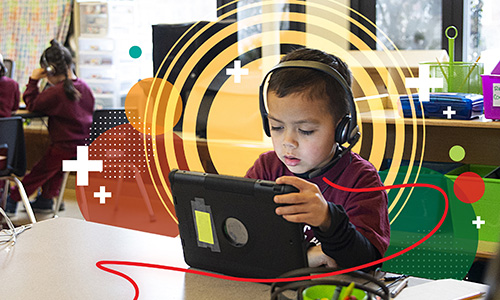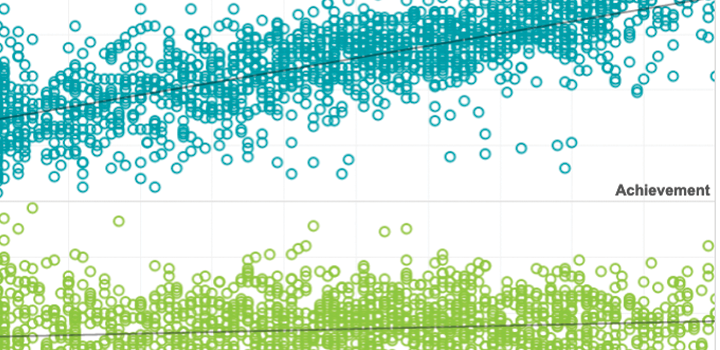Journal article
Achievement growth in K-8 Catholic schools using NWEA data
2021
Journal of Catholic Education, 24 (2). http://dx.doi.org/10.15365/joce.2402012021
By: Julie Dallavis, Megan Kuhfeld, Beth Tarasawa, Stephen Ponisciak

Abstract
Using a national sample of kindergarten to eighth grade students from Catholic and public schools who took MAP Growth assessments, we examine achievement growth over time between sectors. Our findings suggest that while Catholic school students score higher in math and reading than public school students on average, they also enter each school year at a higher level. Public school students close this gap to some degree during the school year. Additionally, these patterns varied by age and subject. Catholic school students in the earlier grades show less growth in both reading and math during the academic year compared to their public school peers, but in middle school, growth patterns in math were comparable across sectors.
See MoreThis article was published outside of NWEA. The full text can be found at the link above.
Topics: Early learning, Middle school
Related Topics


Predicting Amira Reading Mastery Based on NWEA MAP Reading Fluency Benchmark Assessment Scores
This document presents results from a linking study conducted by NWEA in May 2024 to statistically connect the grades 1–5 English Amira Reading Mastery (ARM) scores with the Scaled-Words-Correct-Per-Minute (SWCPM) scores from the MAP Reading Fluency benchmark assessment taken during Fall and Winter 2023–2024.
By: Fang Peng, Ann Hu, Christopher Wells
Products: MAP Reading Fluency
Topics: Computer adaptive testing, Early learning, Measurement & scaling, Reading & language arts


MAP Reading Fluency with Coach Evidence Base
This document provides an overview of the research underlying MAP Reading Fluency with Coach’s AI-powered intelligent reading tutor and the research on key elements of early literacy instruction. It describes the components of the MAP Reading Fluency with Coach pedagogy and the research base supporting each component.
By: Amy Endo
Products: MAP Reading Fluency
Topics: Early learning, Empowering educators, Innovations in reporting & assessment, Reading & language arts


COVID-19 in the early elementary years: A comparison of achievement in spring 2019 and spring 2022
New NWEA research provides further evidence of the challenges that young learners are currently facing from the disruptions of the COVID-19 pandemic.
By: Megan Kuhfeld, Karyn Lewis
Topics: COVID-19 & schools, Early learning, Equity


Pathways of mathematics achievement in preschool: Examining executive function and task orientation
This study used longitudinal data from a sample of 467 preschoolers to examine (1) if children’s executive function (EF) skills at the beginning of pre-K predict growth in their mathematics achievement across the pre-K year, (2) whether growth in learning behaviors, specifically task orientation, mediate the associations between EF and mathematics achievement, and (3) if there are sex differences in these associations.
By: Tara Hofkens, Jessica Whittaker, Robert Pianta, Virginia Vitiello, Erik Ruzek, Arya Ansari
Topics: Early learning, Math & STEM


Using data from the Applied Problems subtest of the Woodcock-Johnson Tests of Achievement administered to 1,364 children from the National Institute of Child Health and Human Development (NICHD) Study of Early Childcare and Youth Development (SECCYD), this study measures children’s mastery of three numeric competencies (counting, concrete representational arithmetic and abstract arithmetic operations) at 54 months of age.
By: Pamela Davis-Kean, Thurston Domina, Megan Kuhfeld, Alexa Ellis, Elizabeth Gershoff
Topics: College & career readiness, Early learning, Math & STEM


This study examined the stability of social-emotional learning (SEL) skills and the extent to which students’ initial level in SEL skills in 6th grade and growth in SEL skills from 6th to 8th grade are related to students’ successful transition to secondary school. Findings suggest that understanding how a student develops social-emotionally can improve identification of students not on track to succeed in high school.
By: James Soland, Megan Kuhfeld
Topics: Social-emotional learning, High school, Middle school


Family perceptions of participating in a structured summer kindergarten transition program
Researchers interviewed parents whose children participated in a three-week structured kindergarten transition program designed to promote parental involvement in school, reduce students’ chronic absenteeism, and increase children’s readiness for kindergarten. Interviewees expressed that participating in the program yielded benefits for themselves and their children, and proposed various ways that adjusting the program could better meet the needs of all stakeholders. Parent suggestions were synthesized into multiple implications for practice and substantiated by current relevant literature.
By: Christopher Merideth, Beth Cavanaugh, Sue Romas, Nicole Ralston, Eva Arias, Beth Tarasawa, Jacqueline Waggoner
Topics: Early learning, Empowering educators


